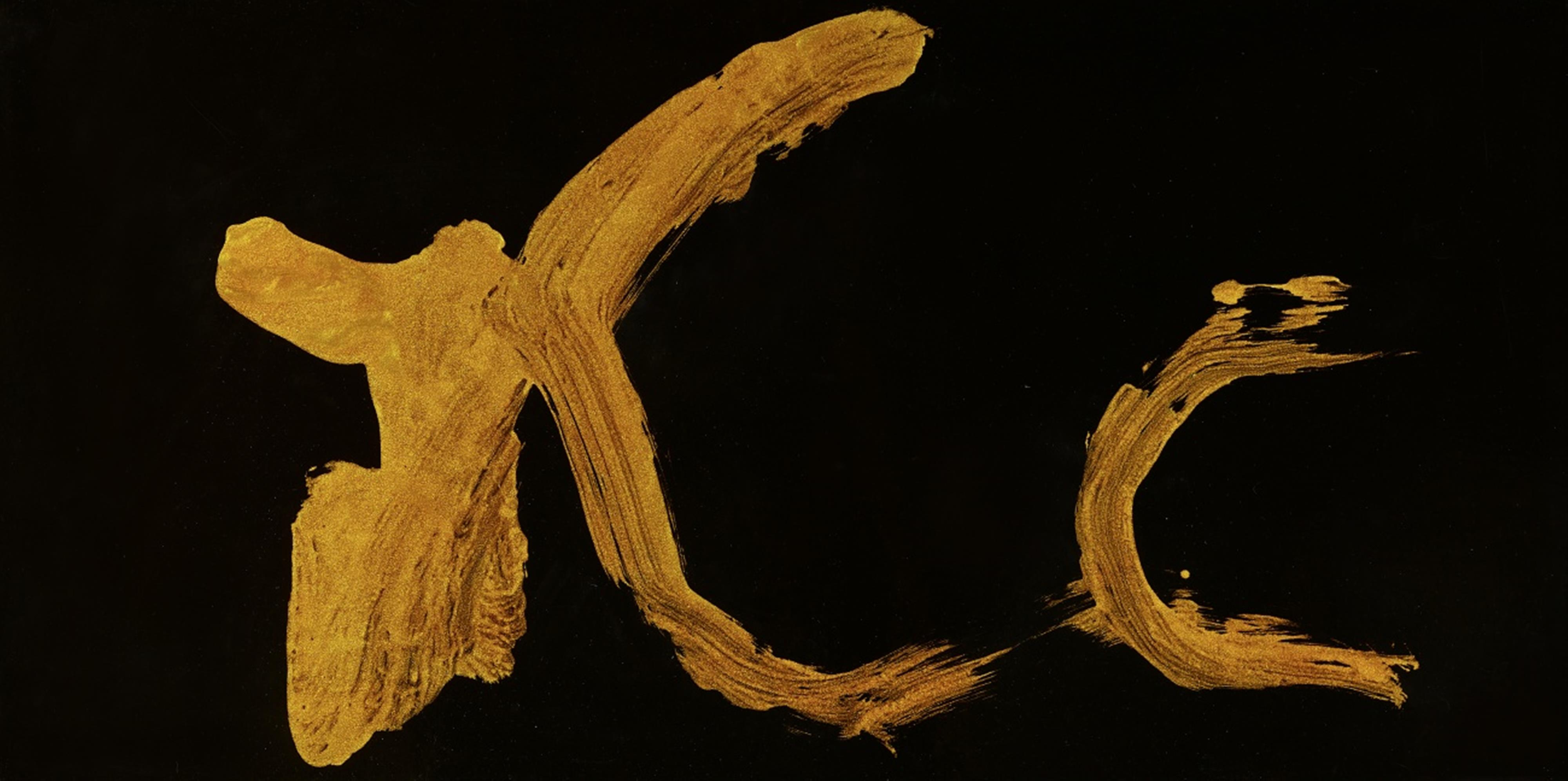Morita Shiryû
Large calligraphy panel with the Chinese character „ki“ (Tree) in cursive script. Aluminum paste on layers of black paper, coated with transparent lacquer. On the reverse the ar...
Large calligraphy panel with the Chinese character „ki“ (Tree) in cursive script. Aluminum paste on layers of black paper, coated with transparent lacquer. On the reverse the artist’s paper label with handwritten title, measurements, date of 1989, signed Morita Shiryû in ink and sealed. Framed.
80 x 160 cm
Morita Shiryu was born in Toyooka, Hyôgo Prefecture. From the year 1935 he studied calligraphy under master Ueda Sôkyô in Tokyo, followed by Tajima Yukei. In 1948 he founded the magazine "Sho no bi", which was replaced by "Bokubi" in 1950. In this magazine artists would deal with Western art and emphasize the abstract beauty of ink forms. Abstract art however, could not achieve what one can express with a single character. Living in Kyoto since 1950, morita Shiryu had found his spiritual teacher in the Zen philosopher Hisamatsu Shin'ichi. They founded the Bokujinkai (ink man group), to which Inoue Yûichi also belonged. Morita found his own style around 1960: spiritedly painted characters, exploding in broad strokes and into splashes. Movement becomes form. The content and the deep meaning of a character were the starting point for him. In the mid-1960s (until the 1980s) he began to experiment with new materials including aluminium paste on several layers of black paper. The surface was then covered with natural lacquer, whose yellowish tint gave the characters a golden hue. The aluminium paste, which necessarily had a past-like effect, allowed the brush movement to be clearly expressed. It increased the line and added a sense of space. Around 1965 he also developed the technique of writing in black on gold leaf.

